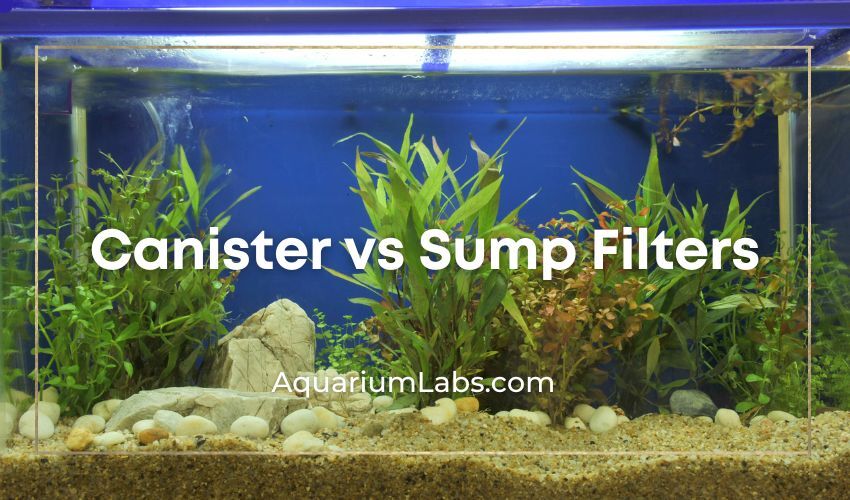Whether a small or a big tank, filtration is perhaps one of the most pressing concerns you will have, especially if you want the perfect water quality for your tank.
Although flow rates and tank size determine what type of filtration to choose, comparing two different types of aquarium filters can help.
Check out this canister filter vs sump filter to determine which is best for your aquarium today!
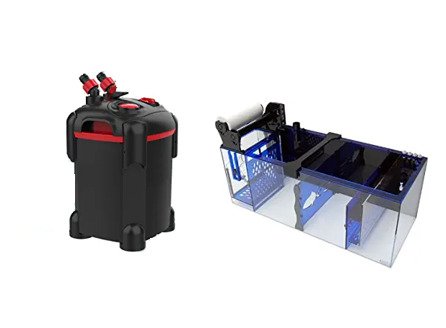
What Are Canister Filters?
Canister filters are a type of power filter that filters aquarium water with pressure. Typically, a canister filter is designed with a powerful pump, an intake, and a return pipe.
The canister filter collects water from the tank and forces it through the filter system.
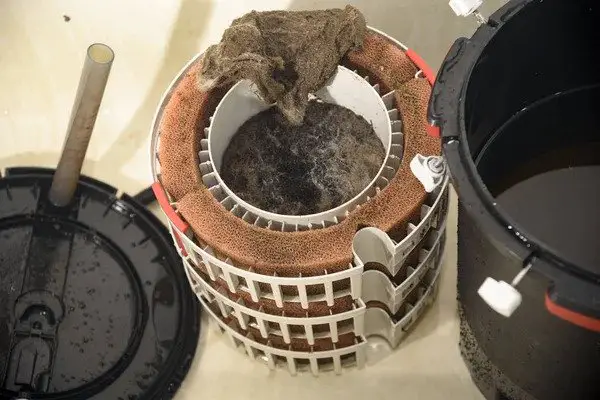
This system has filter media such as sponges, cartridges, and bio media such as bio balls to help filtration.
The bio balls help retain some beneficial bacteria, so they are transported back to the tank. The intake tube draws the water while the pump returns the water into the tank.
What Are Sump Filters?
A sump filter is a more complex type of filter. A sump system is usually a container filter made of glass or acrylic and kept below the aquarium.
A sump filter cleans aquarium water using gravity to draw the water and a powerful pump to return it to the aquarium.
The box is usually under the aquarium stand and hardly ever fails.
A sump filter is usually designed with an overflow box from which water flows into the sump. After filtration, the water is pumped back into the tank by a pump.
Canister Filter vs Sump Filter
| Type | Advantages | Disadvantages |
|---|---|---|
| Canister Filter | * It is easy to install * Design is very compact * Saves space * Very silent * Biological and mechanical filtration is much better * Efficient | * Maintaining it is time-consuming * When used in small and medium tanks, its pressure flow and rate of filtration may lead to overkill * Very expensive * Not easy to customize |
| Sump Filter | * Can hold more volume of water * Versatile and customizable to meet the aquarium needs * Can house protein skimmers, UV lighting system, and more * Larger volume of water can be handled easily | * Has complexity in setting up * To be efficient, it must be upgraded * If there’s a plumbing failure, it can lead to leaks and flooding |
Noise Difference
Sump filtration typically involves using a secondary tank that your main tank drains into.
There is one pump that pumps water into the tank, and that water passes passively into the sump. But the problem with this filter is it makes noise as the water from the overflow box trickle down into the sump.
This is unlike the canister filter. A canister filter hardly makes noise. The compact design and discreet intake and return tubes make it very quiet.
All the filtration happens inside the canister filter, and the water is forced back into the aquarium. There is no sound of water from the main tank to a secondary tank all day long.
Difference in Adaptability
An aquarium sump can filter more water than a canister filter. It can also oxygenate larger tanks with lots of fish and plants faster than canister filters.
Although both systems carry water well, another difference is how adaptable sumps are compared to canister filters. An aquarium sump filter has more room for many types of filtration media than a canister filter.
Sump filters offer endless possibilities. You can also fix a protein skimmer or any other setup your aquarium needs. This is not the same for canister filters, as they have little room for a limited amount of filter media.
Difference in Maintenance Time
Sumps are easier to clean and service. It takes lesser time to check maintenance functions and clean up a sump filter than a canister filter.
You can do maintenance by wiping it clean and no more. Perhaps, the easiest to care for is the wet-dry filter models.
But it takes more time to clean and maintain a canister filter. Maintaining canister filters demand that you take the parts apart totally.
\After dismantling the aquarium filter, you must clean the parts and media. Then you must couple the canister filter back and fix the filter to the aquarium.
The canister filter may not be your best option if you are looking for an aquarium with less maintenance.
Difference in Setup Time
There is hardly any challenge with connecting your canister filter to your aquarium. Once you go through the manual, it’s a no-brainer!
Whether for a bigger tank or a normal size tank, all you have to do is first assemble the canister parts. You can choose an external canister.
Essentially, you have to place the canister under the aquarium, perhaps in the aquarium stand compartment.
After that, you want to install the intake and return hoses. Do not run it with your aquarium immediately. It would be best to first prime the canister filter.
Also, ensure that you rinse out the filter media to remove dust and other debris that may flush into your aquarium. Rinsing the filter media helps flush out bubbles from the media like activated carbon.
Installing a sump requires more than a simple assemblage, rinsing, and connection.
You will have to shop for all the plumbing parts and other components you will need for the project. In many instances, you will need someone with technical knowledge about sump setups to help you set it up.
This is very important because this technical expert has the knowledge to determine how big the sump should be for your large tank, how much power your return pump should have for a good flow rate, and any extra equipment the sump may need for more efficiency, etc.
The setup time is usually longer than the time it takes to install a canister filter.
Difference in Level of Efficiency
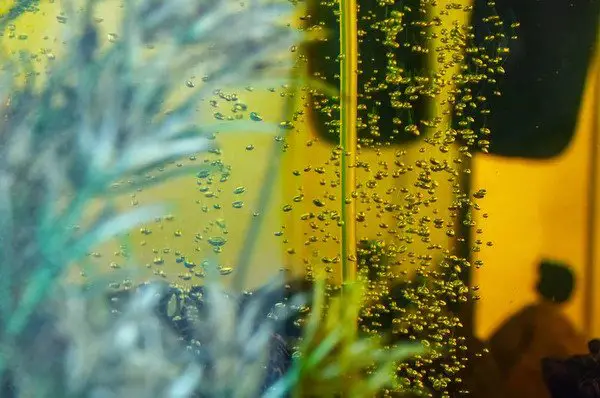
Although it is thought that a sump filter can handle larger water volumes than a canister filter, the truth is that they can both handle larger water volumes.
However, a canister filter is efficient on its own, whereas you will need to customize your sump filter to house many chambers for the different types of filtration your tank needs. You will have to do this to ensure that your sump filtration system works efficiently.
Another difference is that the canister filter has limited space for the number of filter media it can take. But this is not the same with the sump.
You can always modify your sump to take as much filter media as you want. You can also increase its efficiency by adding a protein skimmer to ensure that leftovers are taken out even before they begin to rot.
Which Type for Saltwater Tanks?
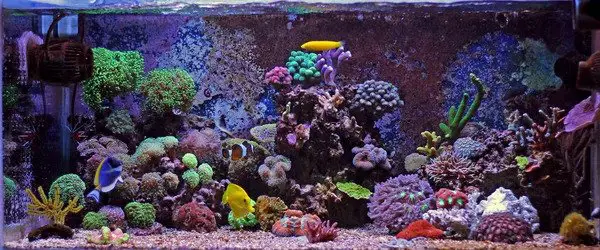
It would be best to use a sump filter for your saltwater aquarium. Unlike freshwater aquariums, saltwater tanks do not support a lot of biodiversity.
In addition, they are relatively easier to treat and clean than freshwater aquariums.
Unlike a freshwater aquarium, saltwater aquariums are not too hard to clean, but you still need to keep the water free of impurities.
Canister filters in a saltwater aquarium will be overkill. A sump filter would be the best option.
You can also clean the impurities spread on your aquarium surface with a hang-on bio wheel filter.
Common Mistakes To Avoid With Your Filters
Filtration is very important, especially when you run a big tank. Making mistakes that reduce the efficiency of your filtration setup can have a far-reaching effect on your tank.
Check out some of the common mistakes that hobbyists make below:
Sump Filter
A common mistake to avoid is failing to replace the filter media as when due. If you fail to replace the filter media, you can expect your sump to stop working effectively.
You want to ensure that you follow a regular maintenance routine where you check every part of the sump filtration system for parts that need replacement.
Installing the overflow box wrong is also one of the easy mistakes a hobbyist can make. To get the right drain speed, you must ensure that your overflow box is placed right to drain water into the filter.
Forgetting to prime the sump before using it is another common mistake that hobbyists make. When you fail to prime the pump properly, the pump will not get any water.
This usually leads to overheating. Always prime the pump properly before using it.
Canister Filter
Failing to tighten filter hoses properly is one of the commonest mistakes canister filter users make. This mistake will not only affect the filtration system’s efficiency but will also cause flooding around the external canister.
It would be best to ensure that the hoses are tightly fixed and that there are no leaks.
Forgetting to rinse the canister filter before hooking it to your setup is another mistake that hobbyists sometimes make. It is important to rinse out the dust and any possible debris in the system before hooking the canister filter to your aquarium.
Hampering the efficiency of the canister filter by forgetting to change the filter cartridge when necessary.
Although canister filter maintenance can be time-consuming, replacing cartridges when necessary will increase the efficiency of your system and the water quality of your aquarium.
You want to replace the cartridge, and you want to do so on time.
Final Thoughts
Canister filters and sumps are great filters. They will both work well, notwithstanding the water volume of the tank. However, they differ in many respects.
The differences in how they operate, how often they need to be maintained, and their prices are some factors that help hobbyists choose between the two.
The major disadvantage of using a sump is that it may not be good enough for intense aquarium water filtration. Since the system uses an overflow box, it works best at filtering the surface water.
But this is not the same with the canister filter. It is highly effective, and it does a more intense filtration job. But it does not do a great job filtering the surface water.
Another determining factor is the price. Canister filters are relatively less expensive than sump systems. But many times, the difference is not much.
If you run a very large aquarium, the best filtration system may be an immersed system that removes the dirt at the base and a hang-on back filtration setup for the debris on the water surface.
But if you combine an immersed filter to catch the debris on the aquarium base and a hang-on back filter to clean the water surface, it would be best to regularly check the filtration rate to prevent over-filtration.
References:
- https://en.wikipedia.org/wiki/Sump_(aquarium)
- https://en.wikipedia.org/wiki/Aquarium_filter
- https://animals.mom.com/setting-up-sump-filtration-system-aquarium-9649.html
- https://en.wikipedia.org/wiki/Protein_skimmer
- https://www.allpondsolutions.co.uk/aquarium/marine/sump-overflow-box/

